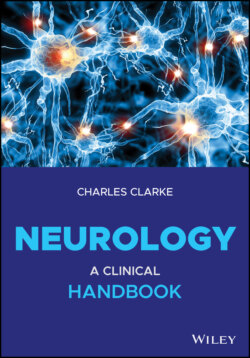Читать книгу Neurology - Charles H. Clarke - Страница 178
Paraparesis
ОглавлениеSpastic paraparesis, meaning lower limb weakness of cord or, rarely, cortical origin, is a pivotal diagnosis. Prior to MRI, clinical examination had a major role in differentiating between cord compression and other causes of paraparesis.
The clinical picture begins with subtle features:
Scuffing the toes of shoes, often worse on one side
Stiffening of gait (spastic gait) with retention of a narrow base
Noticeable beats of ankle clonus (e.g. on a step or kerbstone)
Changes in lower limb sensation.
Spinal pain is common in cord compression. With a thoracic meningioma, pain at tumour level develops with an emerging spastic paraparesis and a sensory level, rising from below. The patient complains of numbness or altered sensation commencing in the feet, that marches upwards, over days, weeks or longer. Brown‐Séquard features (pyramidal signs on one side, spinothalamic on the other) may appear.
These features apply equally to tetraparesis (syn. quadriparesis).
The five principal features of a pyramidal lesion may not all be present. Pain may not be present in cord compression. Marked asymmetry can sometimes cause difficulty.
Two questions arise when signs of spastic paraparesis are found:
Is the paraparesis caused by cord compression?
Is the paraparesis the result of a condition in which it is part of the picture? Examples are:MSMNDSubacute combined degeneration of the cordSyringomyeliaCortical lesions such as a parasagittal meningioma, hydrocephalus and other brain lesions can occasionally cause paraparesis.
Paraparesis is also caused by many rarities, such as vascular anomalies of the cord, adrenoleucodystrophy and copper deficiency (see Chapter 16). There can be difficulties with the initial diagnosis: within primary care, especially when restricted to a brief telephone call, emergence of difficulty in difficulty in walking is not taken seriously, and early features of a paraparesis can pass unrecognised.
